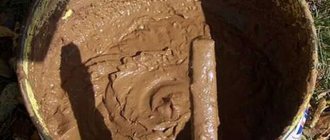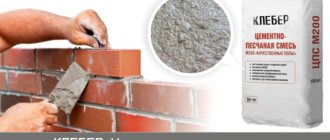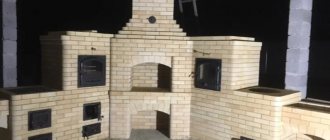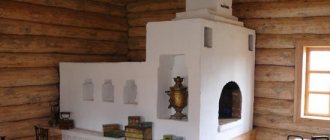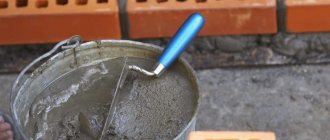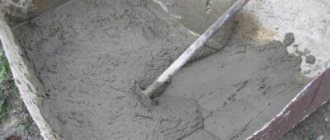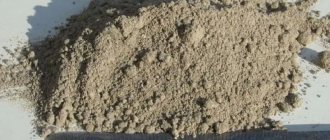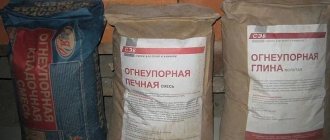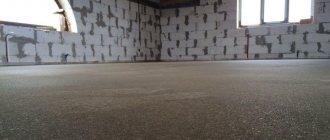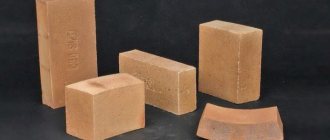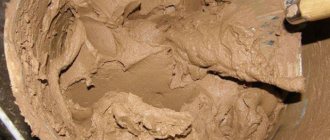Description
Durable fireproof fireclay mortar is a material that cannot be used without when laying stoves, fireplaces and arranging fireproof protection for industrial structures. Unlike a conventional solution, which reduces the strength of the object being treated, the fire-resistant mixture contains substances that are not capable of melting and deforming at temperatures above 1500 degrees.
On our company’s website you can order fireproof mortars at competitive prices. All products comply with GOST and are certified.
Features of masonry
The finished mortar can only be placed on a surface that has previously been freed from traces of old masonry mixtures, other contaminants, and traces of limescale deposits. It is unacceptable to use such compositions in combination with hollow-core bricks and silicate building blocks. Before laying fireclay mortar, the brick is thoroughly moistened.
If this is not done, the binder will evaporate faster, reducing the strength of the joint.
The laying order has the following features:
- The firebox is formed in rows, according to a pre-prepared diagram. You should first perform a test installation without mortar. Work always starts from the corner.
- A trowel and jointing must be used.
- Filling of joints should occur throughout the entire depth, without the formation of voids. The choice of their thickness depends on the combustion temperature. The higher it is, the thinner the seam should be.
- Excess solution protruding on the surface is immediately removed. If this is not done, it will be quite difficult to clean the surface in the future.
- Grouting is done using a damp rag or washbrush. It is important that all internal parts of the channels, fireboxes, and other elements are as smooth as possible.
We recommend: Types and features of using putty for wooden floors
Upon completion of the masonry and grouting work, the fireclay bricks in the mortar solution are left to dry under natural conditions.
Properties of fireclay material
The material consists of an aluminosilicate mixture that can withstand temperatures up to 1750 degrees Celsius. Fireclay mortar also contains fireclay. It has a powder-like consistency:
- fine-grained - up to 1 mm in diameter, contains fireclay component and up to 20% clay;
- coarse-grained - from 2 to 2.8 mm, containing up to 30% additives, except fireclay powder;
- medium-grained - from 1 to 2 mm, contains up to 25% clay.
Fireclay fireproof mortar, which we sell, is excellent for internal coating of objects that require resistance to high temperatures.
Instructions for use
Mortar has excellent performance characteristics. The mixture helps to create masonry that has virtually no restrictions on the period of operation, but in order to achieve this result, it is necessary to properly prepare the solution. The order in which the work is performed also plays an important role.
Preparing the mixture
Mixing the material does not cause difficulties, but there are a number of subtleties that must be taken into account.
To prepare the mixture use:
- water - used in cases where the mixture is expected to harden during heat treatment of the masonry;
- liquid glass or aluminum phosphate - provide effective curing under natural conditions, when the air temperature is +10... +30 degrees Celsius.
An important factor is consistency. If the seams are expected to be thick (more than 2 mm), then the fireclay mortar mixture should be thick, and if thin (less than 2 mm), then it should be of medium viscosity or liquid. The following table will help you correctly calculate the amount of water (or other liquids):
- thick mixture - 8.5 liters;
- average - 11.8 l;
- liquid - 13.5 l.
For private use (creating a small hearth, stove or fireplace), it is recommended to use mortar of the MS-28 and MS-39 brands. The choice is due to good fire resistance, as well as moderate cost.
The mixture must be kneaded until a homogeneous mass is obtained. After this, it is extremely important to close the container and let the mortar brew, waiting about 1 hour. This will help strengthen the technical and physical performance of the composition, making it more effective. Afterwards you can proceed directly to the laying.
Please note that this requirement applies to thermosetting mixtures. If the solution hardens when exposed to air, it must be used immediately after mixing.
Some manufacturers sell a ready-made, mixed mixture. It is a plastic mass, easy to use. This option is suitable for small jobs, however, when constructing large stoves or fireplaces, it is recommended to resort to dry mixtures, which helps to correctly calculate the material consumption and save money on its purchase.
Mortar additives
Professional stove makers often use all kinds of plasticizers to improve the consumer properties of mortar. Of course, in this case, preparing the solution entails additional costs, but it allows you to obtain a mixture with the necessary characteristics.
Craftsmen often resort to silicate glue, adding no more than 5% of the total mass, as well as 15% of Portland cement. In this case, expansion rates when heated increase, and the ceramic film forms much faster.
To reduce the likelihood of cracking of seams in finished masonry, experts recommend using fireclay sand. In this case, 1 share of mortar to 2 shares of sand is used.
Adding construction cement to the mortar solution should be avoided. It is a mistake to believe that it will help strengthen the binding properties of the mixture. In this case, it is possible to reduce the natural characteristics of the fireclay mortar, making the mixture unsuitable for stove masonry.
Consumption of mixture for masonry
As noted above, 1 cubic meter of masonry requires about 100 kg of mixture. Of course, the consumption directly depends on the density of the solution, which must be taken into account in the preliminary calculation. On average, a 20-25 kg package is enough for 40-50 bricks.
Work order
It is extremely important to dip the fireclay bricks in water before applying the mortar, as otherwise they will absorb moisture directly from the mortar, reducing its performance. If this is not done, cracks will inevitably appear in the masonry.
When applying the mortar to bricks, it is necessary to ensure uniform filling. All cavities must be completely filled with the mixture. This will help achieve maximum adhesion and also eliminate the formation of voids. Solid seams are of higher quality and better withstand loads and high temperatures.
Please note that when laying stoves, you can use not only new, but also old bricks, which saves money. However, a number of requirements must be taken into account:
- bricks must be intact, not cracked, durable;
- the old solution should be completely removed;
- Each brick must be cleaned of soot and lime deposits.
Physical and chemical characteristics of brands
| The name of indicators | MSh-28 | MSh-31 | MSh-36 | MSh-39 |
| Mass fraction, %: | ||||
| Al2O3, no less | 28 | 31 | 36 | 39 |
| Fe2O3, no more | — | — | 1,6 | 1,8 |
| Na2CO3, within | 0,12-0,18 | 0,12-0,18 | 0,12-0,18 | 0,12-0,18 |
| Lignosulfonates (LST), within | 0,07-0,13 | 0,07-0,13 | 0,07-0,13 | 0,07-0,13 |
| Change in mass during ignition, %, | 1,3-3,0 | 1,8-3,2 | 1,3-3,0 | 1,3-3,2 |
| Fire resistance,˚С, not lower | 1650 | 1690 | 1730 | 1730 |
| Mass fraction of moisture, % no more | 5 | 5 | 5 | 5 |
| Grain composition, % passage through the mesh: | ||||
| No. 2, no less | 100 | — | — | — |
| No. 1, no less | — | 100 | 100 | 100 |
| No. 05, within | 60-94 | — | — | — |
| No. 05, no less | — | 95 | 95 | 95 |
| No. 009, within | — | 60-85 | 60-90 | 60-85 |
| No. 009, no less | ||||
Application
Since fireclay material can easily withstand high temperatures, it is widely used not only in everyday life. Common areas of application for refractory fireclay mortar include:
- production of steel-pouring ladles;
- arrangement of brick kilns;
- coating of surfaces that are subject to colossal thermal loads.
The availability of MSh fireclay mortar in Moscow makes the material in demand in other areas.
Rules for preparing and applying ready-made mixtures
The advantage of purchased formulations is the ease of mixing the solution. To be able to prepare it, you will need a container of the appropriate volume and, without fail, a mixer or an electric drill with an attachment. The fact is that manually preparing a solution requires a certain amount of physical effort, and to make the work easier, more water is often added to it than it should be. As a result, there is a loss of quality of the finished mixture.
Preparation of the solution consists of pouring the dry mixture into warm water and stirring the mass until the lumps are completely dissolved. The consistency should be similar to thick sour cream. The solution is left for an hour, after which it is thoroughly mixed again.
Dry mixtures for laying fireplaces and stoves have water-retaining ability, so the bricks do not need to be pre-wetted. Firstly, it saves time, and secondly, it significantly reduces the period required to dry the masonry. The good elasticity of the solution, obtained through plasticizing additives, is reflected in the ability to make thin seams (2-4mm) and, as a result:
- on economical consumption of bulk material;
- on the attractive appearance of stove and fireplace walls;
- in the absence of cracks, which often appear in a thick masonry layer.
Heat-resistant compounds should be worked at an ambient temperature of no lower than +10 and no higher than +35 degrees. The solution can be applied in a layer of 10-12mm. Interestingly, seams made of fireclay clay mixture during the operation of the furnace acquire additional strength under the influence of heat.
Preparation of composition for laying fireclay bricks
A fireproof masonry mixture prepared on the basis of fireclay tolerates fairly high temperatures. Here you can use coal without any problems when heating, without worrying about the masonry. The preparation should be taken most carefully and responsibly, since if the components are calculated incorrectly or the manufacturing sequence is violated, the result may not be a completely suitable mixture for installation.
- We put the fireclay clay in a bucket and fill it with water so that it is not visible and leave it to infuse for about 12-72 hours. You will need to stir the soaked mixture from time to time.
- Then this clay will need to be rubbed through a sieve. It is best when the cell does not exceed 3x3 mm. Using the same sieve, you need to pass the sand and add it to the clay. Many experts consider the best ratio for masonry: 2 parts sand to 1 part clay. The dry composition of clay and sand must be mixed until smooth, and after that add water.
Attention: In order for the masonry composition to come out as good as possible, it must be constantly stirred when adding water. In this case, water should be added continuously, but in a small stream.
When the mixture becomes creamy, stop adding water. It is at this step that it is best to add salt to the solution.
- A regular bucket of mixture requires about 150 grams of salt. Salt gives the solution better strength. Then add about half a trowel of cement - it will strengthen the composition. In some cases, mixing with liquid glass occurs.
- A correctly prepared solution will flow down the shovel in an even layer, while an incorrect one will spread strongly or even become a lump. This mixture is the optimal choice for filling voids.
- The approximate amount of mortar for laying one hundred bricks is two buckets. In the case of laying out a Russian stove, the quantity must be increased by about twenty percent due to the specifics of the masonry.
A fireproof mixture is used for the fireplace and stove. By the way, the smaller the fraction of components, the higher quality the composition will be.
Advantages
The properties of raw materials are expressed in its advantages relative to other materials:
- the mixtures do not have an expiration date, the main thing is that the environmental conditions correspond to the parameters - from -50 to +50 degrees Celsius;
- preparing the composition is very simple, no complex equipment or skills are needed;
- easy to use in the home;
- one of the most resistant fireproof materials.
Some brands of compounds can withstand temperatures up to 17,000 degrees Celsius.
